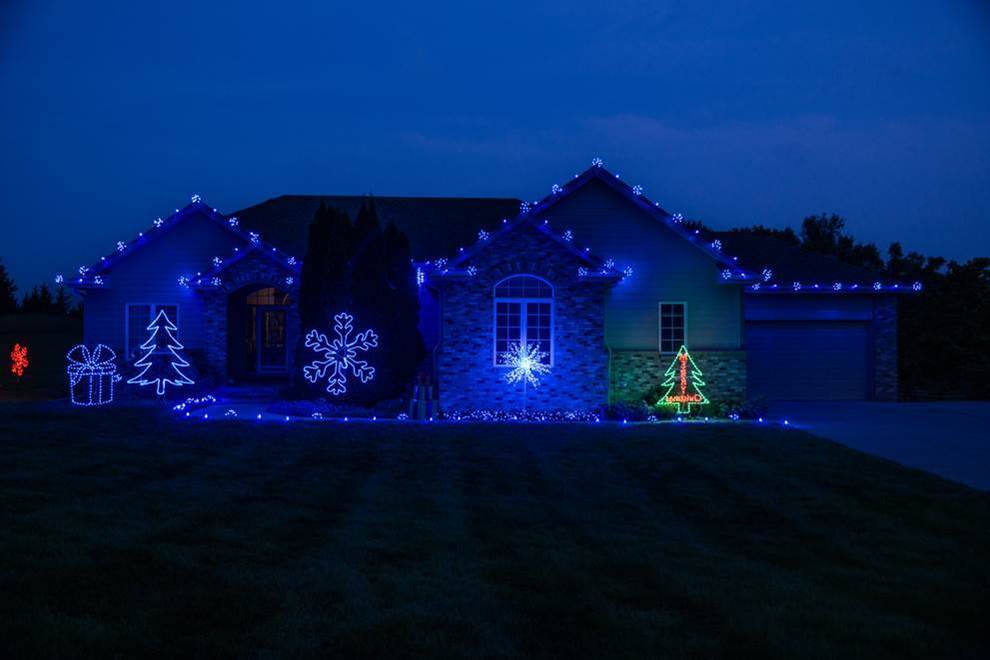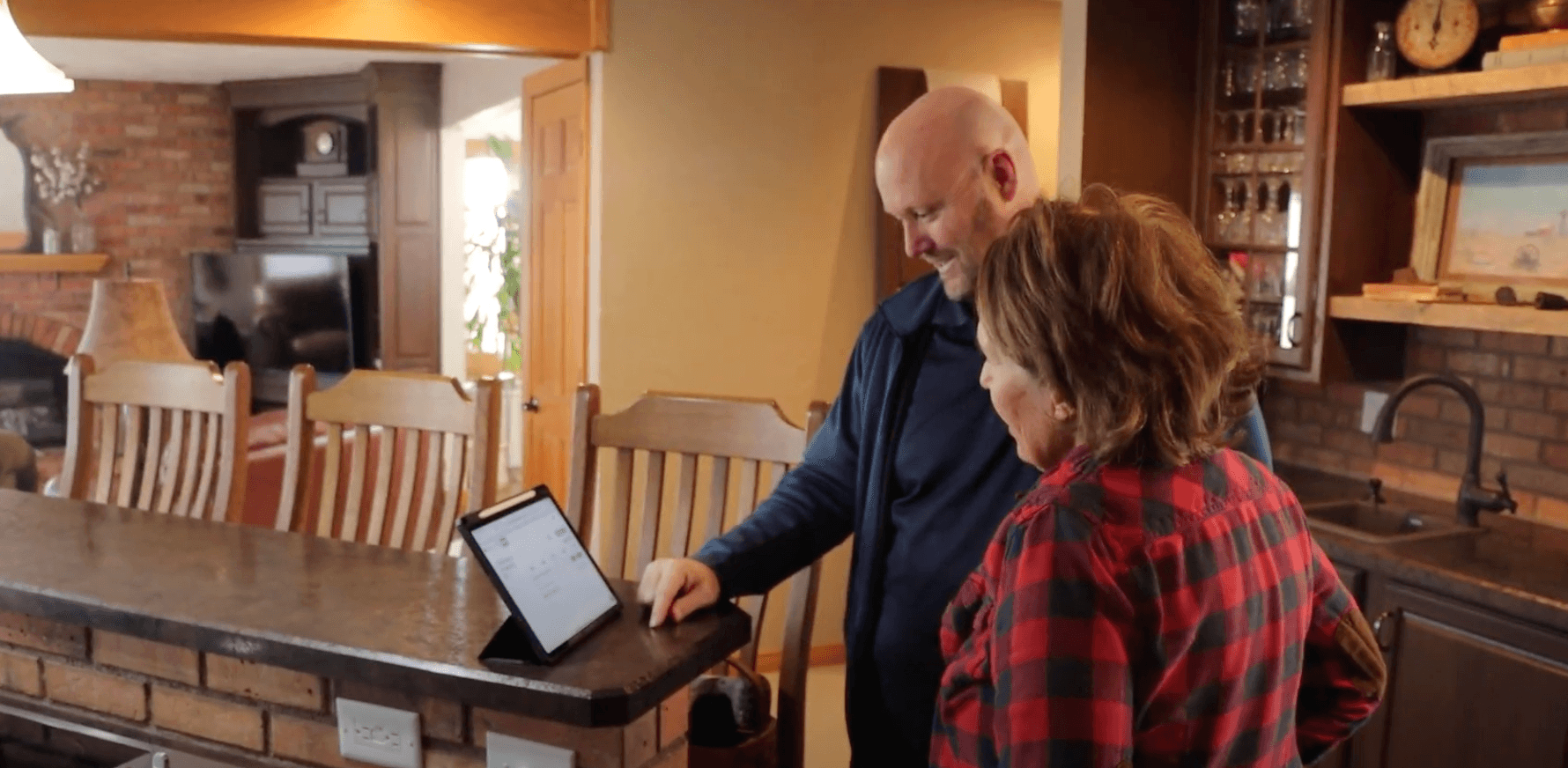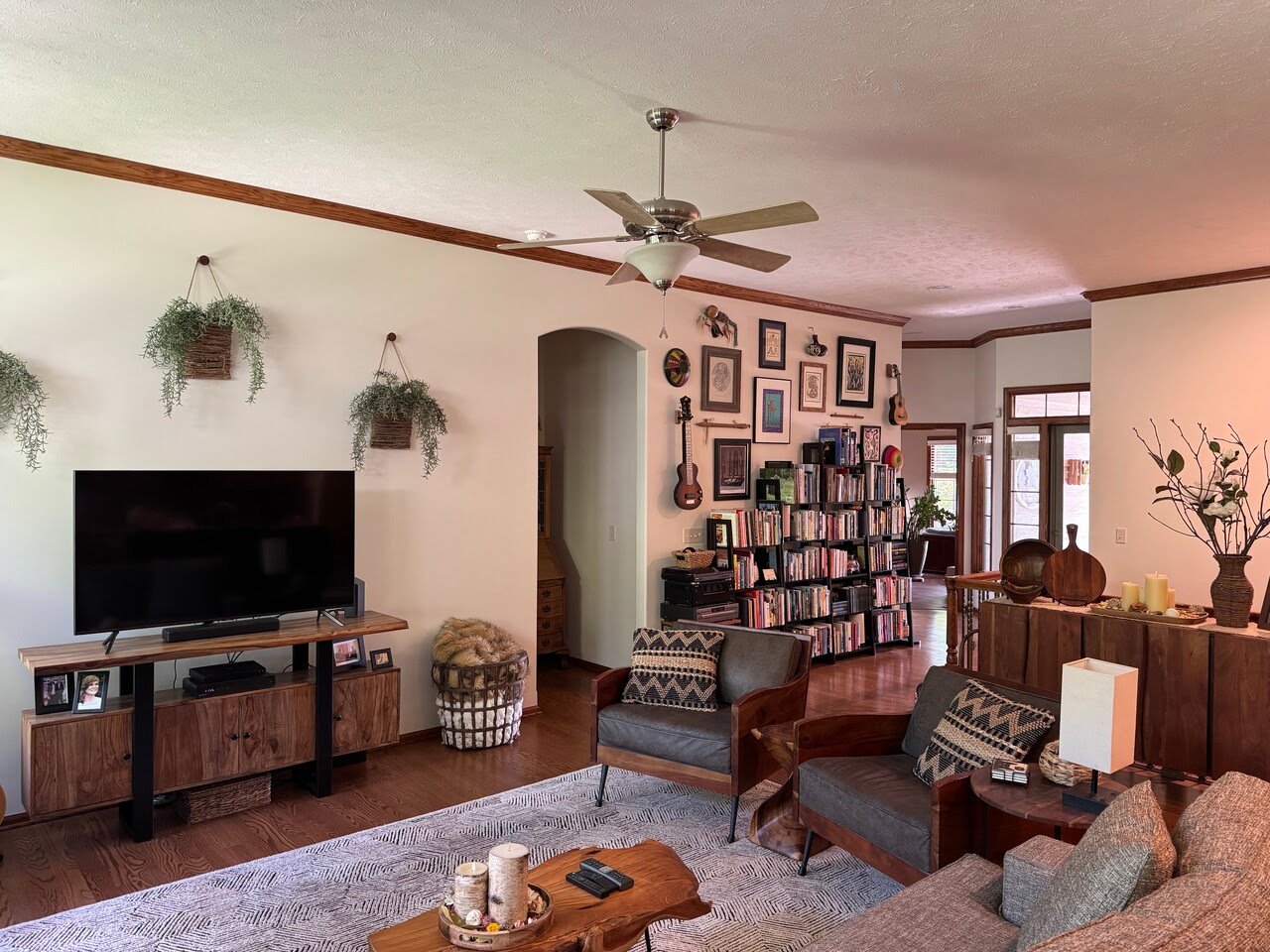Composite vs Wood Decks in Omaha, NE
August 21st, 2024
4 min read
-Aug-21-2024-01-46-32-8303-PM.png?width=800&height=418&name=Blog%20Post%20Image%20Size%20(4)-Aug-21-2024-01-46-32-8303-PM.png)
As a homeowner in Omaha, you likely enjoy spending time on your deck, whether it's hosting summer barbecues or simply relaxing in the evening. However, you might be considering updating from a wood deck to a composite. Whether you have a wooden deck that needs frequent staining and repairs or you're considering switching to a composite deck, deciding which option is best for you can be overwhelming.
At Brush & Roll Painting, with 25+ years of experience in painting and staining, we have a deep understanding of the pros and cons of both wooden and composite decks. Although we only do staining services for decks, our team is dedicated to helping you make an informed choice for your project.
In this article, we will compare wood decks and composite decks. We’ll explore various factors such as cost, weather resistance, durability, longevity, and maintenance. By the end, you’ll have a good understanding of the benefits and drawbacks of each option, helping you decide if your should continue maintaining your wooden deck or switch to a composite one.
Pros and Cons of Wood Decks
Pros of Wood Decks
While composite decks offer many benefits, wood decks have their own set of advantages that shouldn’t be overlooked:
- Aesthetic Appeal: Wooden decks have a natural, timeless beauty that many homeowners find appealing. The natural wood grain and color variations add character and warmth to outdoor spaces.
- Cost-Effective: The lower upfront cost of wooden decks makes them an attractive option for homeowners on a budget. Additionally, if you’re handy with tools, you can save on labor costs by doing some of the maintenance yourself. Maintenance can include repairs and staining or painting.
- Customizability: Wood decks can be easily customized with different stains and finishes to match your home’s style. This allows for a high degree of personalization and creativity in your outdoor space. Many homeowners have also installed iron rods as railings instead of wood, which boosts the style and maintenance.
- Repairability: Wooden decks can be easier to repair than composite decks. Individual boards can be replaced if they become damaged, which can be more cost-effective than replacing large sections of a composite deck.
 Cons of Wood Decks
Cons of Wood Decks
- High Maintenance: Wooden decks require regular staining, sealing, and cleaning to maintain their appearance and structural integrity. This can be time-consuming and costly.
- Weather Damage: Wood is susceptible to weather-related damage such as warping, cracking, and rotting when exposed to moisture and extreme temperatures.
- Fading: UV rays from the sun can cause wooden decks to fade over time, necessitating regular re-staining.
- Pest Vulnerability: Wooden decks can be prone to insect damage, including termites and carpenter ants.
- Splintering: Over time, wood can splinter, which can be uncomfortable and potentially hazardous.
- Shorter Lifespan: Even with proper maintenance, wooden decks generally have a shorter lifespan compared to composite decks. Wood decks typically last around 10 to 15 years.
Pros and Cons of Composite Decks
Pros of Composite Decks
- Low Maintenance: Composite decks require minimal maintenance. They don’t need staining or sealing and can be easily cleaned with soap and water.
- Weather Resistance: Composite materials are highly resistant to weather-related damage. They do not warp, crack, or rot when exposed to moisture or extreme temperatures.
- Durability: Composite decks are very durable and resistant to splintering, insect damage, and wear and tear.
- Longevity: Composite decks can last 25 to 30 years or more with minimal maintenance, offering a longer lifespan than wooden decks.
- Consistent Appearance: Composite decking maintains its color and appearance over time without the need for regular re-staining or painting.
-Aug-21-2024-01-37-28-1673-PM.png?width=588&height=307&name=Blog%20Post%20Image%20Size%20(2)-Aug-21-2024-01-37-28-1673-PM.png)
Cons of Composite Decks
- Higher Initial Cost: Composite decks have a higher upfront cost compared to wooden decks, often ranging from $30 to $45 per square foot. The average total cost for a composite deck is $16,000 to $35,000
- Weight: Composite deck boards tend to be heavier than regular wooden boards. This can cause sagging and bending in the boards.
- Heat Retention: Composite materials can retain more heat than wood, making them hotter to walk on during sunny days.
- Artificial Appearance: Some homeowners prefer the natural look of wood, and composite decking, while improving in appearance, may still have a less authentic look compared to natural wood.
- Static Electricity: Composite decking can sometimes produce static electricity, which can be a minor inconvenience.
- Limited Customizability: While composite decks come in various colors and styles, they do not offer the same level of customizability as wooden decks, which can be stained or painted in a wide range of colors.
-Aug-21-2024-01-38-43-1760-PM.png?width=605&height=316&name=Blog%20Post%20Image%20Size%20(3)-Aug-21-2024-01-38-43-1760-PM.png)
Should You Switch to a Composite Deck?
Deciding whether to stick with your wooden deck or switch to a composite one depends on several factors, including your budget, maintenance preferences, and how long you plan to stay in your home.
If you appreciate the natural beauty of wood and don’t mind regular maintenance, a wooden deck can be a wonderful choice. Especially if your wood is in great condition already. With proper care, a wooden deck can provide years of enjoyment and add charm to your outdoor space.
However, if you prefer a low-maintenance, durable option that will last for decades, investing in a composite deck might be the better decision.
Wooden Decks vs Composite Decks
It can be tough to decide between keeping your wooden deck or switching to a composite. In this article, we’ve explored the differences between wooden and composite decks in terms of cost, weather resistance, durability, longevity, and maintenance.
If you’re tired of the ongoing maintenance and costs associated with a wooden deck, or if you’re looking for a more durable and low-maintenance solution, consider switching to a composite deck.
On the other hand, if you love the natural beauty and customizability of wood, and your wooden deck is in good condition, sticking with a wooden deck could be the right choice for you.
At Brush & Roll Painting, we use our painting expertise to help you make the best decision for your home. Whether you choose to maintain your wooden deck or switch to a composite one, our team is ready to provide expert advice and if you choose, deck staining services to ensure your deck remains a welcoming and well-maintained part of your home.
When choosing to keep and maintain your wooden deck, you’ll have to find a reputable painter whom you can trust for regular deck staining. To ensure you hire the best painter for your deck, download the ultimate guide to hiring a painter by clicking the button below.
Kaylea is the Brush & Roll Painting Content Manager. Kaylea is a Journalism and Media Communications summa cum laude graduate with a minor in Marketing from the University of Nebraska at Omaha. Kaylea manages the marketing for Brush & Roll Painting.
Topics:
















-Jul-23-2025-02-21-33-5468-PM.png?width=800&height=418&name=Blog%20Post%20Image%20Size%20(2)-Jul-23-2025-02-21-33-5468-PM.png)




-Oct-22-2025-01-39-19-5208-PM.png?width=800&height=418&name=Blog%20Post%20Image%20Size%20(1)-Oct-22-2025-01-39-19-5208-PM.png)





